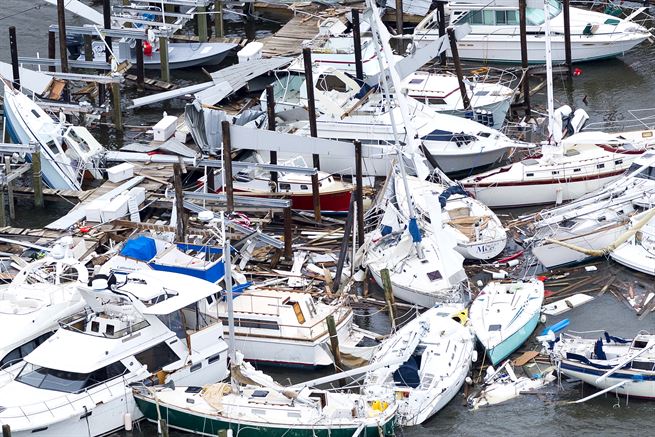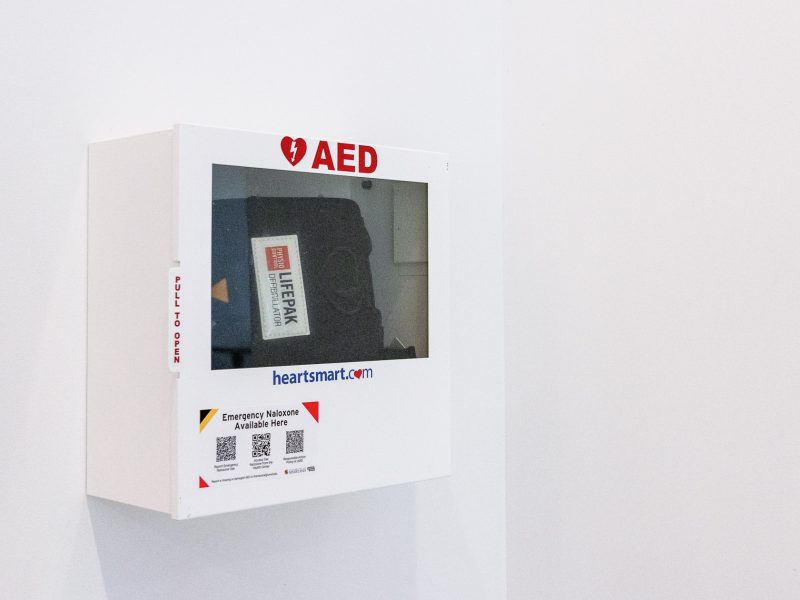Hurricane Jose may hit the northeastern United States this week, and the University of Maryland’s Office of Emergency Management and police department say they’re ready if it does.
“We are well-prepared for notifying the community, getting information out in regards to emergencies, disasters, weather-related [incidents],” emergency manager Alisha Childress said.
The Delaware-Maryland-Virginia coast faces about a 30 percent chance of tropical-storm-force winds starting Monday afternoon or evening, The Washington Post reported Sunday afternoon.
Childress and University of Maryland Police spokeswoman Sgt. Rosanne Hoaas cited UMD Alerts — which are sent via email and text message, as well as social media — as a key tool in getting the word out for a variety of emergencies, including those that are weather-related. University Police also work with the media to make the university community aware of emergencies, she added.
[Read more: UMD students and faculty are coming together to help Hurricane Harvey victims]
Having multiple ways to communicate information to the campus community makes this university easier to secure during emergencies, compared to a city with a similar size and population, said University Police Chief of Staff David Lloyd. As of fall 2016, there were about 39,000 undergraduate and graduate students enrolled at this university.
“We are able to reach out to our population much more thoroughly, because we have email addresses and many people have provided their cell phone numbers,” Lloyd said. “We can send text alerts, so it is not quite a closed community, but we have a greater ability [than] any town or county, even if it’s the same number of people.”
During such emergencies, a team made up of representatives from University Police, the College Park Fire Department, this university’s Facilities Management department and the city of College Park, among others, will assemble in the Emergency Operations Center. The room has two screens for projectors, four TV screens and an oval table for officials.
“It’s an opportunity for different functions across the university as well as those other partners … to come in and to assist and to provide information, share what’s going on out in their respective fields,” Childress said.
In 2015, a campuswide power outage led officials to activate the center, Childress said.
University Police emergency manager Cpt. Kenneth Ecker said when officials want to form the center, he can “type in a few words, hit a button, [and] it goes out to everybody, [and] everyone knows to come here.”
[Read more: After Hurricane Matthew’s devastation, UMD students raise money for victims in Haiti]
Students and faculty on the campus can also take some steps to prepare themselves, and September is National Preparedness Month, sponsored by the Federal Emergency Management Agency.
Allison Reilly, a civil and environmental engineering professor at this university and a civil engineer specializing in risk and resilience of infrastructure systems, encourages students to think about whether they have access to a portable radio if the internet connection goes down or whether they know what to do if there’s a large-scale power outage. Community members or residents often wrongly assume that somebody else will come to help them during an emergency, she said.
“The people who are best prepared assume that there’s not going be somebody to protect them or keep them safe,” she said, adding that these people have taken precautions such as having an escape route, backup medication and water.
Buildings in College Park should be designed for wind speeds upwards of 120 to 130 miles per hour, which translates to a category 3 hurricane, said Richard Krupar, a postdoctoral associate and core research affiliate of the Center for Disaster Resilience. Within a building, the safest place during a hurricane is between the lowest and top floor.
“You won’t want to be on the top floor from a wind perspective, because the wind speed increases with height in the atmosphere,” Krupar said. “Also, if you have significant flooding, then you don’t want to be in the lowest level of the dorm or a building, because you could potentially experience some inundation issues.”



